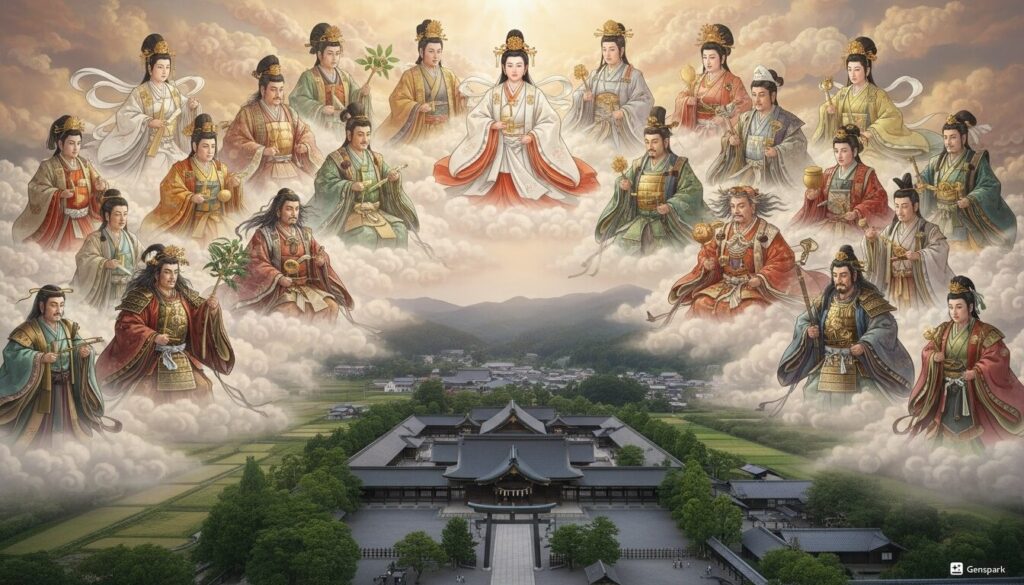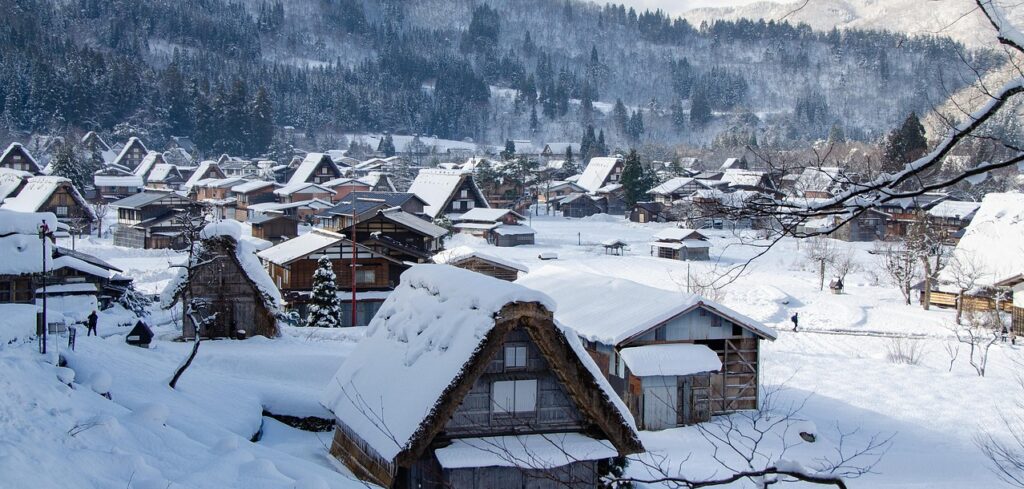
Chapter 2: The Eight Million Gods — The Divine World of Japan
The Meaning of “Yaoyorozu”
“Yaoyorozu” literally means “eight million,” but it expresses more than number. It reflects the belief that every part of nature holds a spirit.
Mountains, seas, wind, fire, rocks, and trees were seen as divine. People lived with deep respect for these forces.
This worldview of “Yaoyorozu no Kami,” or the Myriad Gods, became the heart of Japanese mythology and the soul of Japanese spirituality.
The Three Noble Children — Amaterasu, Tsukuyomi, and Susanoo
When Izanagi returned from the underworld, he purified himself in a sacred ritual.
From this act of cleansing came three powerful deities:
Amaterasu, goddess of the sun; Tsukuyomi, god of the moon; and Susanoo, god of the seas and storms.
Together, they represent light, night, and the untamed forces of nature.
Amaterasu ruled Takamagahara, the High Plain of Heaven. She brought light and order to the world.
However, her brother Susanoo was wild and emotional. His actions caused chaos, driving Amaterasu to hide in the cave of Amano-Iwato.
The world fell into darkness. Yet, when the gods worked together to lure her out, light returned.
This story teaches that harmony can emerge from conflict. Even within darkness, there is hope. New order is born through chaos.
Ōkuninushi and the Gift of Surrender
On earth, in the land of Ashihara-no-Nakatsukuni, ruled Ōkuninushi, the great builder of the nation.
He united many gods and brought peace to the land. Gentle and wise, he is also known for saving the “White Rabbit of Inaba.”
Later, the gods of heaven commanded him to yield his country to the heavenly descendant.
Though he struggled, Ōkuninushi chose peace over war. He handed over his realm and asked only for a shrine where his spirit could rest — the great Izumo Taisha.
His decision symbolizes true strength: the courage to yield for harmony.
It reminds us that dialogue and balance are stronger than domination.
The Descent of the Heavenly Grandson
After Ōkuninushi’s surrender, Amaterasu sent her grandson, Ninigi-no-Mikoto, to earth.
This moment, known as Tenson Kōrin, marks the divine descent.
She gave him the Three Sacred Treasures — the mirror, the sword, and the jewel — and instructed him to rule with virtue.
Ninigi descended upon Mount Takachiho in today’s Miyazaki Prefecture.
This event connected heaven and earth, linking the gods’ lineage with humankind.
His descendants later became Japan’s first emperor, Jimmu.
Lessons from the Gods
Japanese deities are not flawless beings.
They feel anger, sorrow, and compassion — yet always return to harmony.
Amaterasu hides but shines again. Susanoo rages yet shows kindness. Ōkuninushi yields to preserve peace.
Their stories mirror the divine nature within the human heart.
Today, we often prioritize speed and success. As a result, we may forget our connection with nature.
However, the idea of “Yaoyorozu no Kami” reminds us that we live among countless sacred forces.
Gratitude and respect bring balance back into daily life.
The Gods Still Walk Among Us
The Myriad Gods are not distant figures of the past.
They live within the gentle wind, the flowing river, and the kindness between people.
Japanese mythology is not only a story — it is a reflection of life itself.
It whispers timeless lessons of harmony, humility, and gratitude.



コメントを残す